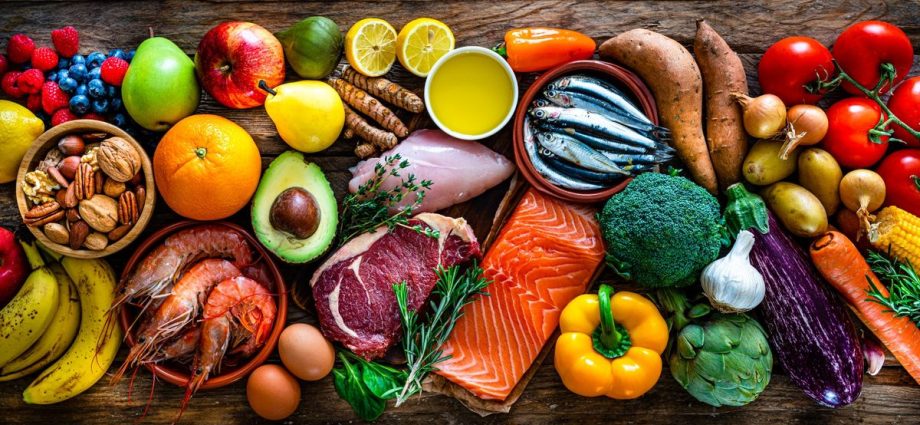Lean unprocessed meats, fish and seafood, leafy vegetables, fresh fruit, eggs, nuts and healthy oils are paleo diet-friendly foods. The plan doesn’t allow dairy, grains (except for whole grains), legumes, processed junk food and added sugar.
The goal is to avoid foods that are difficult for your body to digest, like gluten and lectins.
What Is Paleo?
The Paleo diet is based on the diet of our hunter-gatherer ancestors, which focuses on lean meats, fish and eggs, nuts and seeds, fresh fruits and vegetables. It avoids foods that were not available during the Paleolithic era, such as grains and legumes, and emphasizes natural sources of sugar, like those found in fruits and vegetables.
While the Paleo diet is not a low-salt diet, it does restrict salt by limiting processed foods and avoiding foods high in sodium. Because it prioritizes nutrient-rich foods, the plan can help you manage your weight and reduce the risk of chronic diseases such as heart disease and diabetes.
When you eat Paleo, opt for organic fruits and vegetables, grass-fed beef and free-range poultry, and healthy fats such as avocados, olives and nuts. Add herbs and spices to give your meals flavor and variety. You can also make some of your favorite meals, such as bacon and pizza, Paleo-friendly by swapping regular burgers for lettuce burgers, wheat flour for coconut flour and adding in sweet potato or cauliflower crust.
What Foods Are Allowed on Paleo?
A strict Paleo diet eliminates processed foods, refined sugars, salt and vegetable oils and includes fruits, vegetables, meats (including fish, poultry, pork, lamb, goat and wild game), eggs and nuts (except peanuts, which are legumes). It excludes any food that contains grains or dairy.
The reason for excluding beans and other legumes is that Paleo followers believe they contain too much phytic acid, which can prevent the absorption of some minerals during digestion. They also believe that Paleo hunters and gatherers didn’t eat legumes, which are high in protein, fiber, iron and phytochemicals.
Some Paleo eaters, however, say they can include legumes like green peas and lentils as long as they are cooked to lower their phytic acid content. They can also use a small amount of yogurt as a protein source, but should avoid other dairy products like milk and butter, except for grass-fed varieties. They can also eat fermented dairy, such as kefir, which is considered Paleo-friendly due to its low lactose and casein content.
What Foods Are Not Allowed on Paleo?
The Paleo diet aims to eliminate processed foods and ingredients, including artificial sweeteners. It emphasizes nutrient-rich, unprocessed whole foods like grass-fed meat and free-range poultry, wild-caught fish and seafood and eggs from cage-free chickens. Fresh fruits and berries, vegetables (including those in the nightshade family such as tomatoes, eggplant and peppers) and nuts and seeds (pistachios, Brazil nuts, pumpkin seeds, sesame seeds and flax seeds) provide fiber, protein and healthy fats.
The diet excludes grains (including wheat, barley, corn and rye), legumes and dairy products except for kefir, full-fat natural yogurt and butter. The plan also restricts processed vegetable oils and added sugar, although some followers tolerate a small amount of honey, maple syrup, agave nectar or coconut sugar. It’s important to note that eliminating dairy can be challenging for some people, as it removes a source of calcium and vitamin D, especially for women who may be pregnant or breastfeeding. (For tips on how to meet your dairy needs while following a Paleo diet, read this).) Phytic acid-rich foods are also discouraged.
What Can I Eat on Paleo?
A Paleo diet is not just about weight loss. It’s about a lifestyle change that can give you strength, energy and mental clarity. It also may help you fight chronic diseases like Type-2 diabetes and autoimmune disorders, says Cordain.
Lean meats and fish are allowed, as are eggs and other dairy products such as butter and kefir (though Paleo advocates favor nitrate-free bacon over regular). But the big question is what about beans, legumes, soy and peanuts? Legumes are not considered Paleo because they contain lectins and phytic acid, which can block digestion.
However, some legumes, including peanuts, are OK because they were foraged in prehistoric times. Nuts, seeds and oils — especially olive, coconut, flaxseed, chia and macadamia nuts — are also healthy choices, along with fresh fruits and vegetables and herbs and spices. For the best results, Paleo followers should avoid sugary fruits and starchy vegetables such as potatoes, beets and cassava, as well as alcohol, salt and refined vegetable oils like canola.











